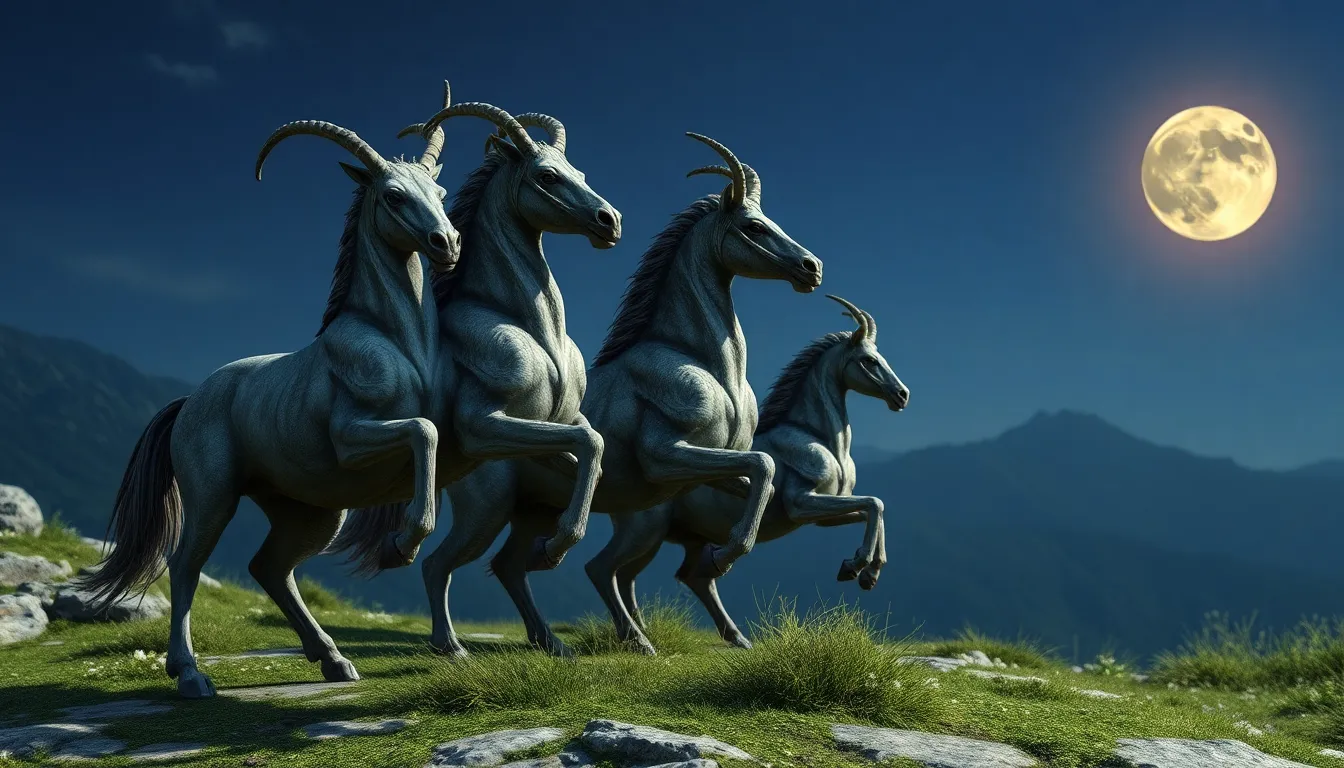The Role of Centaurs in Greek Mythological Geography
I. Introduction to Centaurs
Centaurs are fascinating creatures from Greek mythology, characterized by their unique hybrid form of a human upper body and the body of a horse. This combination symbolizes the duality of nature that exists within all beings, representing both the civilized and the wild aspects of existence.
The origins of centaurs can be traced back to ancient Greek legends, with their emergence in the myths surrounding the region of Thessaly. They are often depicted as both noble and brutish, embodying the struggle between civilization and barbarism.
In the Greek mythological landscape, centaurs hold significant importance, serving as symbols of duality and conflict. They occupy a unique space in the mythology, representing both the best and worst of nature.
II. The Cultural Symbolism of Centaurs
The centaur serves as a powerful representation of the duality of man and animal. This duality is central to their identity and is reflected in their behavior and interactions with other characters in Greek mythology.
- Wildness vs. Civilization: Centaurs embody the tension between the untamed aspects of nature and the order of civilized society.
- Philosophical Implications: The centaur myth can be viewed as a commentary on human nature, exploring the notions of self-control and the struggle against primal instincts.
Thus, centaurs reflect the complexities of human existence, serving as reminders of the constant battle between our civilized selves and our more instinctual, savage natures.
III. Geographic Regions Associated with Centaurs
Thessaly is widely recognized as the homeland of the centaurs, a region steeped in rich mythology and history. The vast landscapes of Thessaly provided the perfect backdrop for the legends of these mythical beings.
One of the most significant locations in centaur mythology is Mount Pelion. This mountain is often depicted as a gathering place for centaurs, where they interacted with gods and heroes alike. Its lush forests and rugged terrain symbolize the wildness associated with these creatures.
Other notable locations in Greek mythology tied to centaur stories include:
- The Thessalian plains, where centaurs roamed freely.
- The river Peneus, often referenced in centaur legends.
- The town of Pholos, associated with the centaur Pholus.
IV. Centaurs in Mythology: Key Tales and Legends
Throughout Greek mythology, several key tales and legends showcase the role of centaurs. One of the most notable is the story of Chiron, a wise and noble centaur who was revered for his knowledge and healing abilities. Unlike most centaurs, Chiron was known for his civilized demeanor and mentorship of heroes such as Achilles and Asclepius.
Another significant myth is the battle of the Lapiths and centaurs at the wedding of Pirithous and Hippodamia. This tale exemplifies the struggle between civilization, represented by the Lapiths, and the chaotic nature of the centaurs, culminating in a fierce conflict that symbolizes the broader themes of order versus chaos.
The impact of centaur myths extends into Greek heroic narratives, where their interactions with heroes often serve as pivotal moments that reflect larger moral and philosophical themes.
V. Centaurs and Their Interactions with Gods and Heroes
Centaurs have complex relationships with several prominent Greek gods. For instance, Apollo is known to have interacted with centaurs, particularly Chiron, who taught him the healing arts. Similarly, Dionysus is often associated with centaurs, representing the wild and uninhibited aspects of nature.
Centaurs also serve as mentors and adversaries to Greek heroes. Their relationships often provide moral lessons, illustrating the consequences of succumbing to one’s more primal instincts versus adhering to civilized behavior.
- Mentorship: Chiron’s guidance of heroes like Achilles emphasizes the importance of wisdom and virtue.
- Adversarial Roles: The violent encounters with centaurs highlight the dangers of excess and the need for self-control.
VI. The Artistic Representation of Centaurs in Ancient Greece
Centaurs have been a popular subject in ancient Greek art, appearing in pottery and sculpture. They are often depicted in dynamic poses, illustrating their dual nature and the tension between man and beast.
The evolution of centaur imagery in Greek art shows a progression from wild and chaotic representations to more nuanced portrayals that highlight their wisdom, particularly in the case of Chiron.
The influence of centaur depictions extends beyond ancient Greece, inspiring artists throughout history and contributing to the broader tradition of mythological art.
VII. The Legacy of Centaurs in Modern Culture
In contemporary media, centaur symbolism has seen a resurgence, appearing in literature, films, and video games. They are often used as metaphors for the struggle between civilization and wildness, resonating with modern audiences.
The centaur serves as a profound metaphor in modern literature and psychology, representing the duality of human nature and the internal conflicts we all face.
The continuing fascination with centaurs in popular culture reflects their enduring legacy and the timeless themes they embody.
VIII. Conclusion
In conclusion, centaurs play a significant role in Greek mythological geography, serving as symbols of duality and conflict. Their stories and interactions with gods and heroes illustrate complex moral lessons that resonate through time.
The legacy of centaurs continues to captivate audiences today, reflecting the enduring nature of their symbolism within the broader framework of mythology and geography. Their presence in both ancient and modern narratives attests to their unique place in the human imagination.




